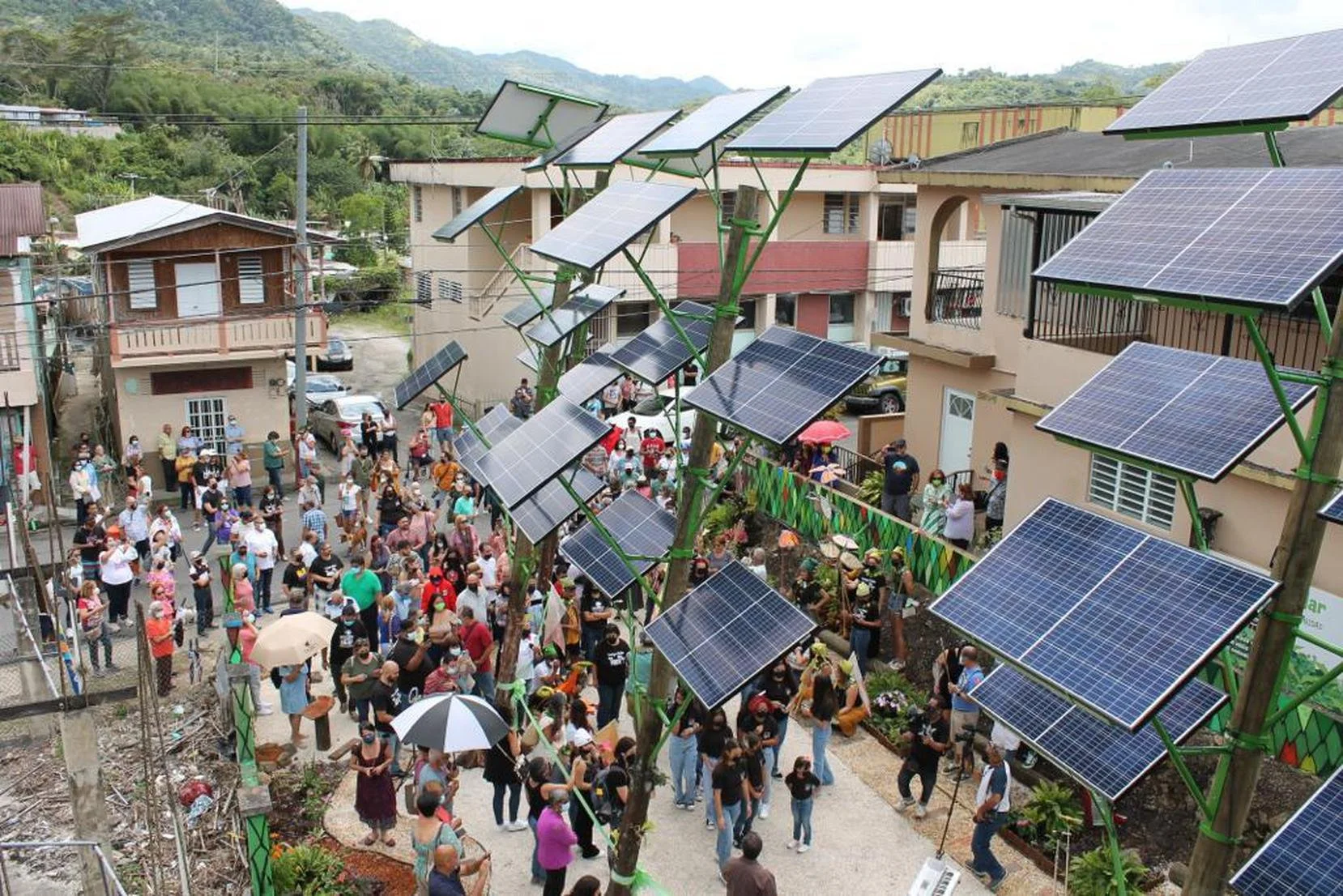There's a "solar energy insurrection" going on in Puerto Rico, from which we can learn. (Star Trek is also helping...)
A "Solar Forest" in Adjuntas. Thanks to El Nuevo Día
One of AG’s friends, the technology critic Adam Greenfield, posted this tweet the other day:
We were intrigued at the idea of a “solar insurrection in Puerto Rico, and went digging… to find an amazing story. The organisation is called Casa Pueblo - who, among many other projects, have been installing community solar energy systems for over two decades. They have come to the fore as the island has suffered energy blackouts as a consequence of hurricane activity and earthquakes.
This May 2022 BBC Mundo story (browser-translated from the Spanish) puts Casa Pueblo in context:
Miguelina Ramos lives in a concrete hut on the slope of El Hoyo, an almost forgotten sector of only 26 families, in the municipality of Adjuntas, far from the impressive Caribbean beaches that makes the American territory famous.
To get home, visitors must navigate winding paths, park in a ditch and then walk through the weeds, passing chickens and cats asleep. Miguelina has lung problems that make her need constant access to a ventilator. Until recently, the 57-year-old woman lived with constant fear of power outages.
Blackouts have become routine in Puerto Rico since hurricanes swept the island in 2017.
In March, a community organization installed solar panels on its tin roof. This meant that last month, when a blackout seized the 3.2 million inhabitants of the island, Miguelina, unlike almost all the others, never lost her light.
Its solar system was installed by the charity Casa Pueblo, which has been using the threat of hurricanes to expand solar energy on the roofs of the entire island and thus offer a more economical and reliable source of energy.
Casa Pueblo has quite a storied history of environmental defence and activism since 1980. But a new generation is making a positive and infrastructural case for regenerative practice - aiming to empower communities to set up their own solar panel networks, in what its director Arturo Massol Deyá calls a “solar insurrection”.
From 2020, Grist magazine widens the context:
The commonwealth [of Puerto Rico] depends upon a creaking grid that generates most of its power from fossil fuels and often collapses during natural disasters. Hurricane Maria devastated the island in 2017, leaving 1.5 million residents without electricity. Many were left in the dark for 18 months before power was fully restored, the longest blackout in the nation’s history. In the aftermath of the storm, Massol-Deyá and his team mounted rooftop solar panels on 150 homes. When a 6.4 magnitude earthquake rocked Puerto Rico last January, those households’ lights stayed on; the rest of the island lost power for more than a week.
In October 2020, Casa Pueblo finished its most ambitious project yet. With funding from a charitable foundation, the Adjuntas Pueblo Solar initiative installed 1,000 new solar panels in the town’s central plaza, creating a microgrid that will provide 220 kilowatts of affordable, reliable electricity to 18 stores, restaurants, and warehouses. The businesses pay a governing body, made up of those businesses’ owners, to maintain the grid. The resulting profits go toward financing solar panels for low-income families in Adjuntas and paying local residents to install them.
In a follow-on piece, Arturo Massol Deyá makes an interesting point about the importance of local control of these energy projects:
With projects like Adjuntas Pueblo Solar, it’s important to transfer decision-making power to the community to allow for self-development. That’s why Casa Pueblo helped form the Community Solar Energy Association of Adjuntas, the governing body made up of business owners who both manage and benefit from the microgrid.
When bureaucratic agencies like the Federal Emergency Management Agency swoop in to help with disaster recovery, all they’re worried about are standards and protocols. Their hearts aren’t invested in the issues that communities are facing.
But when people who are impacted deal with the situation, they share a sense of urgency. They know all the ways their neighbors are suffering. They try to do as much as possible with limited resources.
When solutions draw from the knowledge and experience of community members, I think they work way better than those that come from a top-down approach. It’s very difficult to define a single solution that will work everywhere. And even if you have a great idea and the best technology, the local culture can be resistant to the change.
The businesses involved in Adjuntas Pueblo Solar were skeptical about solar energy at first, but Casa Pueblo has spent years building relationships in the area and was able to earn the owners’ trust and help them see the economic benefits. That’s why community-driven initiatives, aided by local organizations, work better than top-down approaches.
A recent New York Times article gives a wider context to Casa Pueblo’s ambitions - a solar energy market still only at around 2% nationally, profiteering by national energy companies. But the piece also shows how PC’s initiative in Adjuntas is a model for responsive community power. Those with needs for a constant electricity supply - people with medical needs, businesses who need tp prevent their equipment from being ruined or run-down - are identified through deliberative structures, and targeted for help.
Casa Pueblo want to kick start a national drive for massively increasing the use of solar energy - a campaign they’re calling #50%ConSol - half of PR’s energy from solar sources.
And how, might you ask, is Star Trek involved? Well, we discover that Arturo Massol Deyá is in receipt of a 2019 fellowship from the Roddenberry Foundation - yes, that Gene Roddenberry, the originator of the classic TV science-fiction franchise.
For more: Arturo Massol Deya is a columnist (Spanish and paywalled) in El Nuevo Dia


